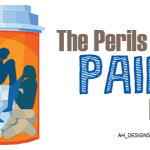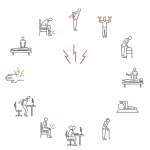(Reuters Health)—Doctors in states that track painkiller prescriptions were nearly one-third less likely to offer patients dangerously addicting opioids, a new study found.
The launch of drug-monitoring programs in 24 states led to an immediate 30 percent drop in prescriptions for Schedule II opioids, the most addictive, in patients with pain complaints, the study showed.
“We are moving in the direction of raising awareness about overprescribing these drugs,” lead author Yuhua Bao says in a phone interview. “But we still have a lot to do in terms of changing the culture and practice of painkiller prescriptions.”
Bao, a health economist at Weill Cornell Medical College in New York, and colleagues analyzed 26,275 office visits for pain in 24 states that implemented prescription drug-monitoring programs from 2001–2010.
As reported June 6 in Health Affairs, in these states the probability of a doctor prescribing a Schedule II opioid dropped from 5.5% to 3.7%—a more than 30% reduction. The results were immediate and held for three years.
The study confirmed Bao’s hypothesis that physician drug-monitoring programs, which have been implemented in a wide variety of forms in every state except Missouri, are an effective tool for combating the opioid drug epidemic. But she stresses the need for other means, as well.
“There are no magic bullets here,” says Dr. Caleb Alexander, who directs the Johns Hopkins Center for Drug Safety and Effectiveness in Baltimore, in a phone interview.
“The interventions are needed along the continuum here – from manufacturers to end-users. This is important to keep in mind given the magnitude of addiction, injuries and deaths,” says Alexander, who was not involved in the current study.
Nearly two million Americans either abused or were dependent on prescription opioids in 2014, according to the U.S. Centers for Disease Control and Prevention (CDC).
Overdose deaths, along with sales of prescription opioids, have quadrupled since 1999, the CDC estimates. More than 165,000 Americans died from overdoses related to prescription opioids from 1999 to 2014.
Some of these deaths might have been avoided if doctors had been able to check a prescription drug-monitoring database, Alexander says.
A database could show when patients are obtaining opioids under their own name from multiple doctors, which might assist in identifying potential abuse and dependency, he noted.
Drug-monitoring databases may make doctors think twice before prescribing pain medications for a variety of reasons in addition to uncovering “doctor shopping” by patients, the study authors write. Knowing that they’re being watched may serve as a deterrent, and the programs may generally increase awareness of the dangers of prescribing opioids, they say.


